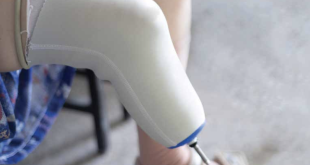 What is black fungus?
What is black fungus?
Black fungus, or mucormycosis, is a rare fungal infection caused by certain types of molds known as mucormycetes. They are found throughout nature, particularly in the soil and decaying organic matter/vegetation.
The spores of the fungus are inhaled through the mouth and nose, but infection rarely occurs in a healthy individual. However, an immune-compromised individual is unable to mount an effective immune response against the inhaled spores; thus, germination and hyphae formation occur and infection develops, most commonly in the sinuses and lungs. The fungal hyphae directly invade blood vessels, producing tissue infarction and massive necrosis with bone destruction, hence the term black fungus.
In the context of COVID-19 era, there has been a notable rise in the incidence of invasive fungal infections of the maxillofacial region. The primary reason in people with COVID-19 are attributable to an ideal environment of low oxygen (hypoxia), high glucose (diabetes, new-onset hyperglycemia, steroid-induced hyperglycemia), acidic medium (metabolic acidosis, diabetic ketoacidosis), high iron levels (increased ferritin), and decreased phagocytic activity of white blood cells due to immune-suppression (SARS-CoV-2 mediated, steroid-mediated, or background co-morbidities) coupled with several other shared risk factors, including prolonged hospitalization with or without mechanical ventilators.
Presentation
The onset of sinus mucormycosis usually starts with nonspecific symptoms like nasal congestion, postnasal drip, dark blood-tinged or purulent rhinorrhea, sinus tenderness, headache, fever, and malaise. Because it invades blood vessels to cause tissue infarction, infection of the ethmoid sinus may penetrate through bone and soft tissue and cause an eschar to form over the infected area. A black necrotic eschar on the nasal turbinates or hard palate is characteristic of maxillary sinus involvement.
After infection of the nasal cavity and paranasal sinuses, the fungi cause a necrotizing vasculitis that extends rapidly into deep face, orbits, cranial cavity, and brain through skull base partitions and foramina. When limited involvement of the paranasal sinuses is present, survival rates are between 50% and 80%. However, when brain invasion has occurred, mortality is greater than 80 percent.
As the infection progresses, there occurs facial/ periorbital swelling or numbness, blurred vision, proptosis, diplopia, ophthalmoplegia, ptosis, and loss of vision, indicating invasion of orbital nerves and vessels. Central retinal artery occlusion (CRAO) is now a well-known ophthalmic complication of COVID 19 that can lead to permanent vision loss. Mucormycosis can cause both central ciliary and retinal artery occlusion.
Mental status changes, hemiparesis, or seizures suggest intracranial invasion, then termed rhino-orbital-cerebral mucormycosis (ROCM), which carries a worse prognosis.
Diagnosis
1. Nasal endoscopy: Blackish discoloration over nasal turbinates, blackish foul smelling crusts or pale nasal mucosa that does not bleed on touch.
2. Diagnostic methods include biopsy and fungal staining (KOH mount). Fungal culture and susceptibility testing are available that can help to confirm the species of mucormycosis.
3. Complete ophthalmic evaluation for any signs of orbital involvement
4. Imaging (contrast enhanced MRI is preferred over CT scan): Nasal and paranasal sinus mucosal thickening with irregular patchy enhancement is an early sign. Ischemia and non-enhancement of turbinates manifests as an early sentinel sign (black turbinate sign)
Treatment
1. Medical
Optimal medical therapy relies on rapid correction of underlying systemic abnormalities, such as acidemia and hyperglycemia, along with prompt antifungal initiation and aggressive surgical intervention.
Initial therapy: Lipid-based amphotericin B, which destroys the cell wall of the fungus, is the first-line medical treatment and should be initiated as soon as the diagnosis is suspected. High doses are required, and renal toxicity may result; however, liposomal formulations may deliver high doses while protecting the renal function.
Step-down therapy: Posaconazole and isavuconazole, broad-spectrum azoles that are active in vitro against the agents of mucormycosis, are available in both parenteral and oral formulations. For patients who have responded to a lipid formulation of amphotericin B, posaconazole or isavuconazole can be used for oral step-down therapy. We continue amphotericin B until the patient has shown signs of improvement; this usually takes several weeks.
Because systemic medications are often unable to reach the infected tissue due to vaso-occlusion, surgery should be considered early in the course of treatment.
2. Surgical
• Early aggressive surgical debridement is important for successful management of invasive fungal disease. This can be done endoscopically, or through an open approach. The goal is to remove all necrotic tissue. Involved tissues rarely bleed, so the surgeon should debride until normal, well-perfused, bleeding tissue is encountered.
• In cases where blindness presents very late, and there is clear radiological evidence of invasion of the orbital cavity by the mucor fungus, exenteration (removal of the eyeball along with its orbital contents) will help reduce gross disease burden and prevent intracranial spread. Some cases even warrant partial or total maxillectomy. Repeated surgical debridement may be needed for local control of the disease, and an aggressive surgical approach seems to improve patient survival.
• Role of transcutaneous retrobulbar Amphoterecin B: It can be considered as an adjunctive treatment in patients with ROCM, who have disease identified early with minimal vision loss or are poor surgical candidates for exenteration.
Conclusion
COVID-19 is associated with a significant incidence of secondary infections, both bacterial and fungal, due to immune dysregulation. The widespread use of steroids/monoclonal antibodies/broad-spectrum antibiotics as part of the armamentarium against COVID-19 leads to the development/exacerbation of pre-existing fungal diseases.
Physicians should be aware of the possibility of invasive secondary fungal infections in patients with COVID-19 infection, especially in patients with pre-existing risk factors, and should enable early diagnosis and treatment with the subsequent reduction of mortality and morbidity. All efforts should be made to maintain optimal hyperglycemia, and only judicious evidence-based use of corticosteroids in patients with COVID-19 is recommended in order to reduce the burden of fatal mucormycosis.
Because mucormycosis may involve the orbit and other ocular structures, the ophthalmologist may be the first physician to see a patient .Thus, it is important to have this disease in the differential diagnosis.
References:
1. Moorthy A, Gaikwad R, Krishna S, et al. SARS-CoV-2, Uncontrolled Diabetes and Corticosteroids-An Unholy Trinity in Invasive Fungal Infections of the Maxillofacial Region? A Retrospective, Multi-centric Analysis [published online ahead of print, 2021 Mar 6]. J Maxillofac Oral Surg. 2021;1-8. doi:10.1007/s12663-021-01532-1.
2. Peman J, Gaitan AR, Vidal CG, Salavert M, Ramirez P, Puchades F, Hita MG, Izquierdo AA, Quindo G. Fungal co-infection in COVID-19 patients: should we be concerned? Rev Iberoam Micol. 2020;37(2):41–46. doi: 10.1016/j.riam.2020.07.001.
3. Sarkar, Sandip; Gokhale, Tanmay; Choudhury, Sushmita Sana1; Deb, Amit Kumar COVID-19 and orbital mucormycosis, Indian Journal of Ophthalmology: April 2021 – Volume 69 – Issue 4 – p 1002-1004 doi: 10.4103/ijo.IJO_3763_20.
 Medicosnext
Medicosnext




